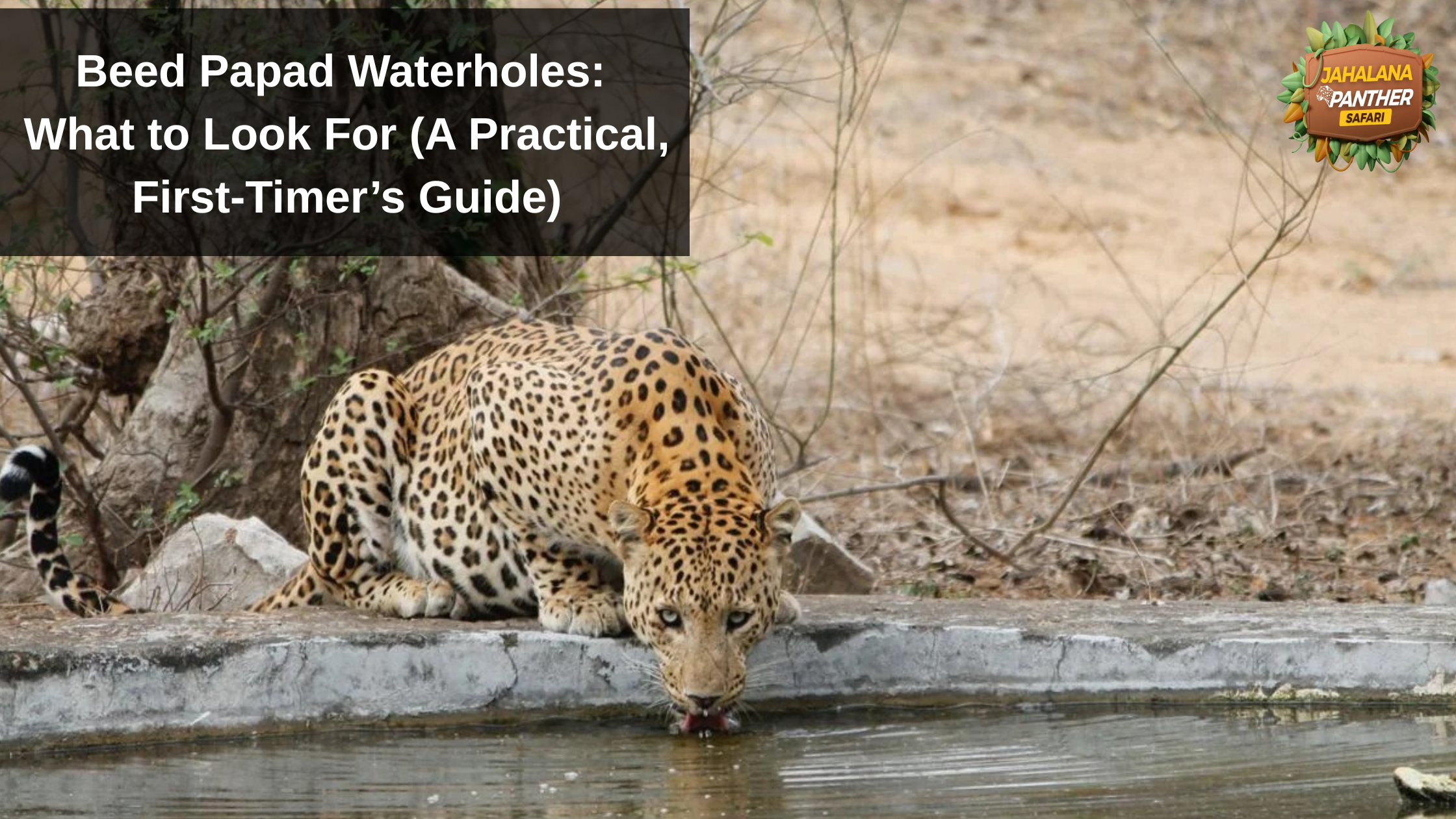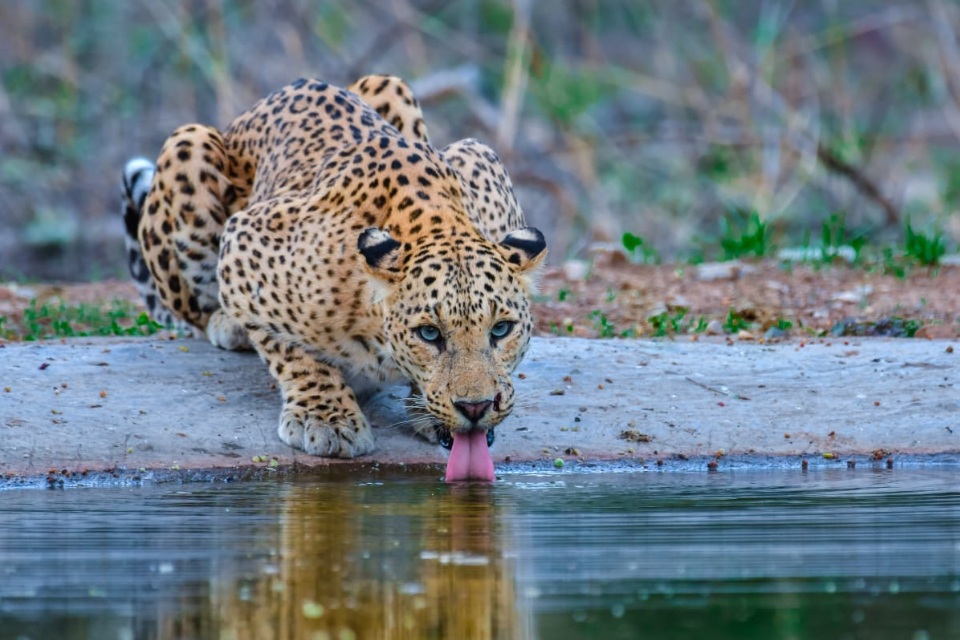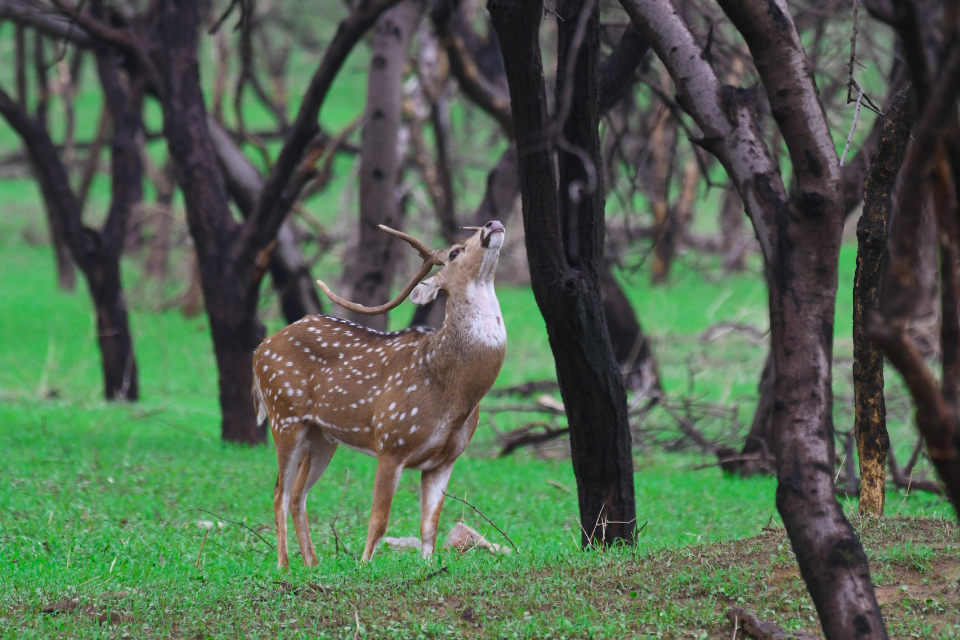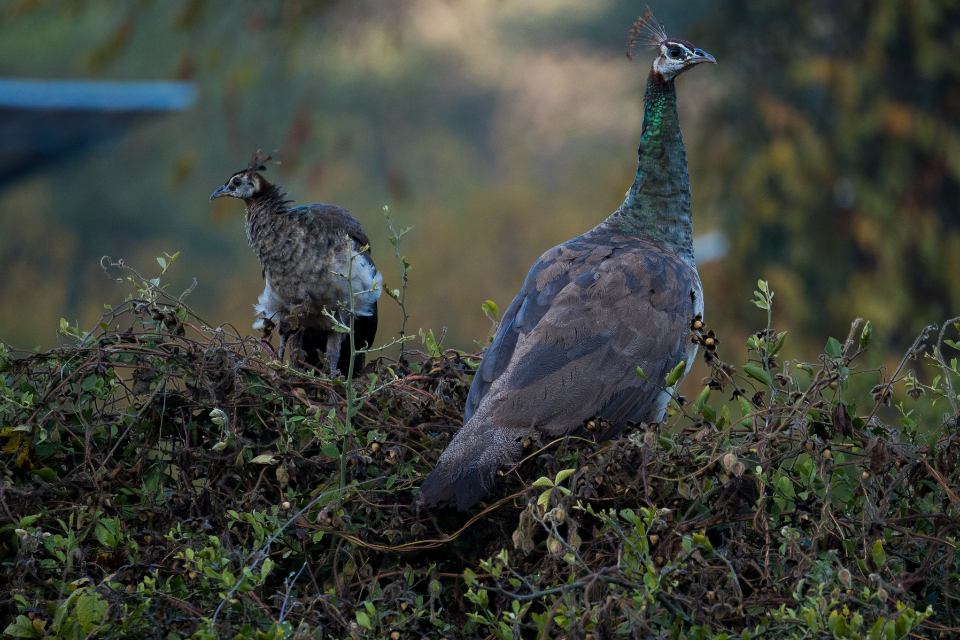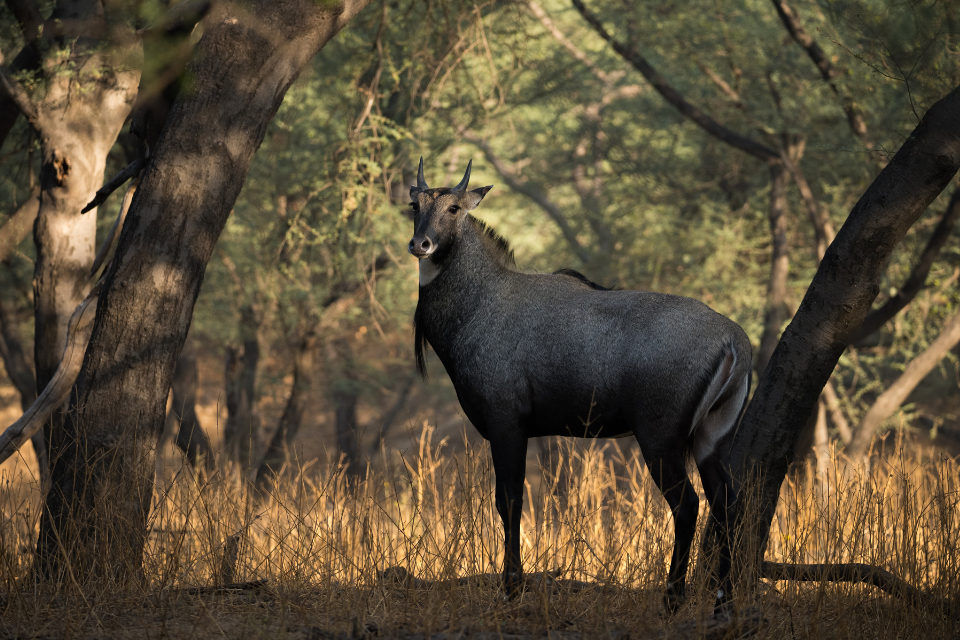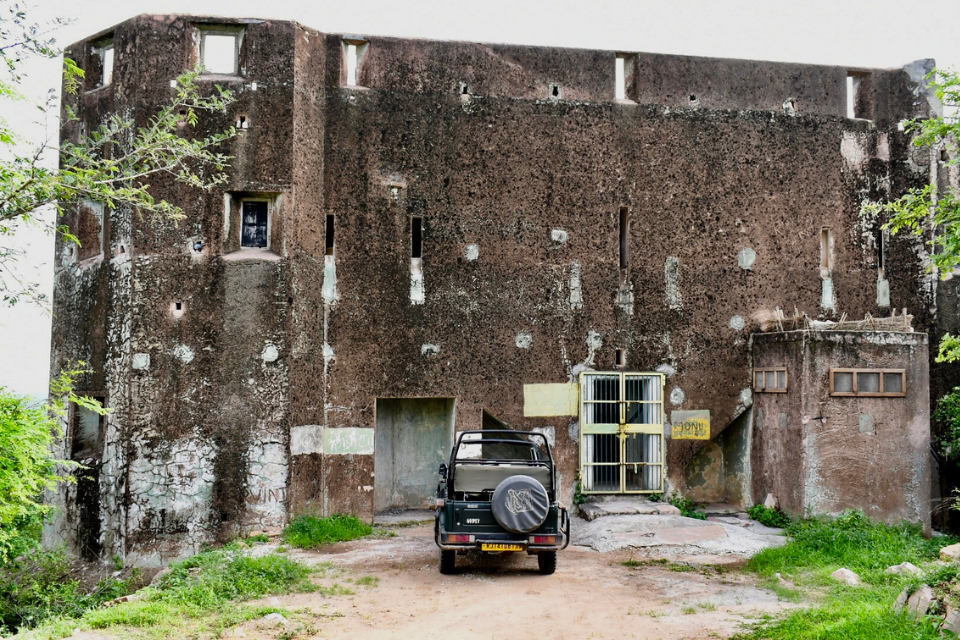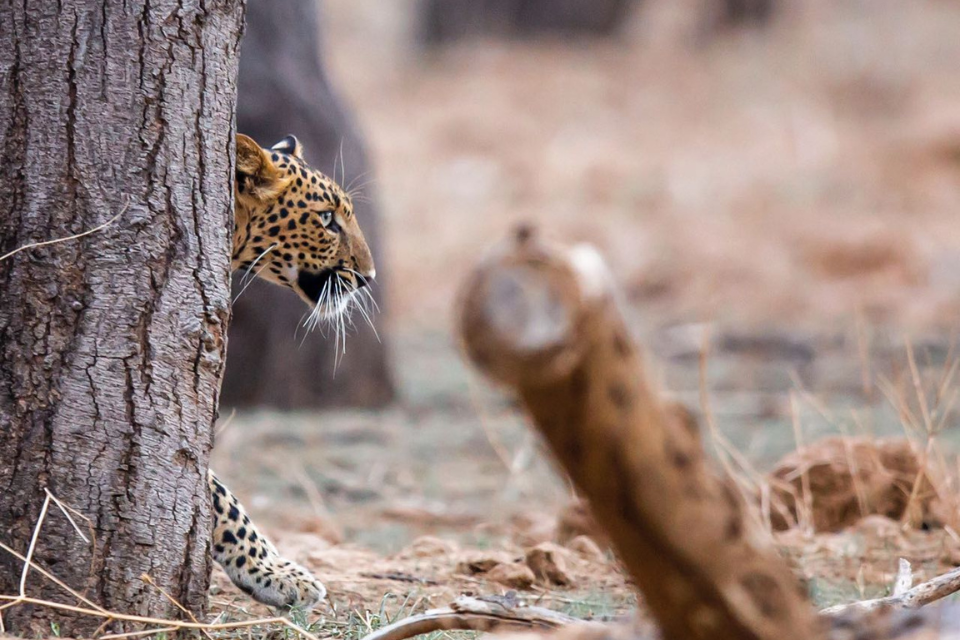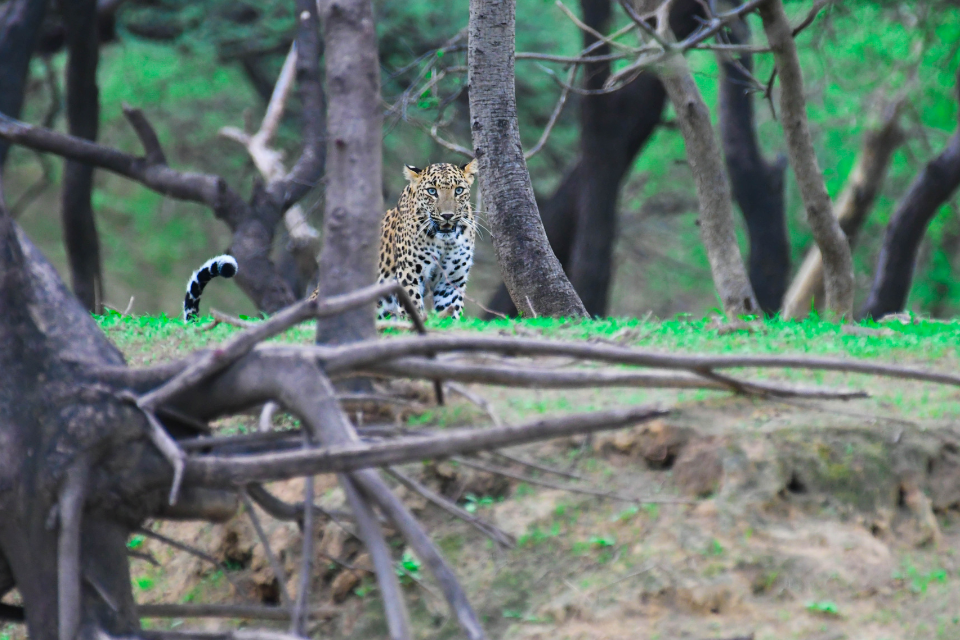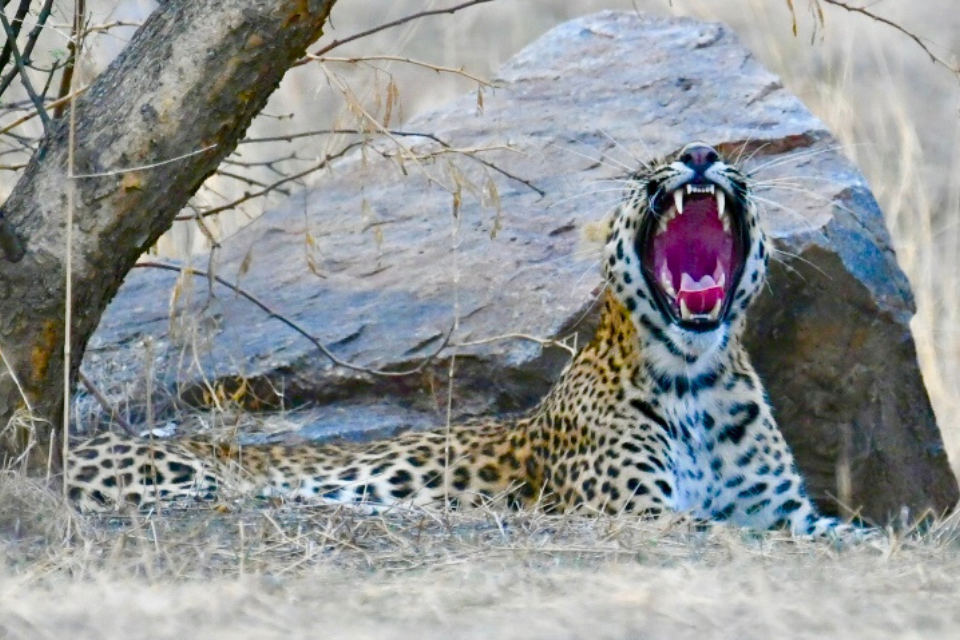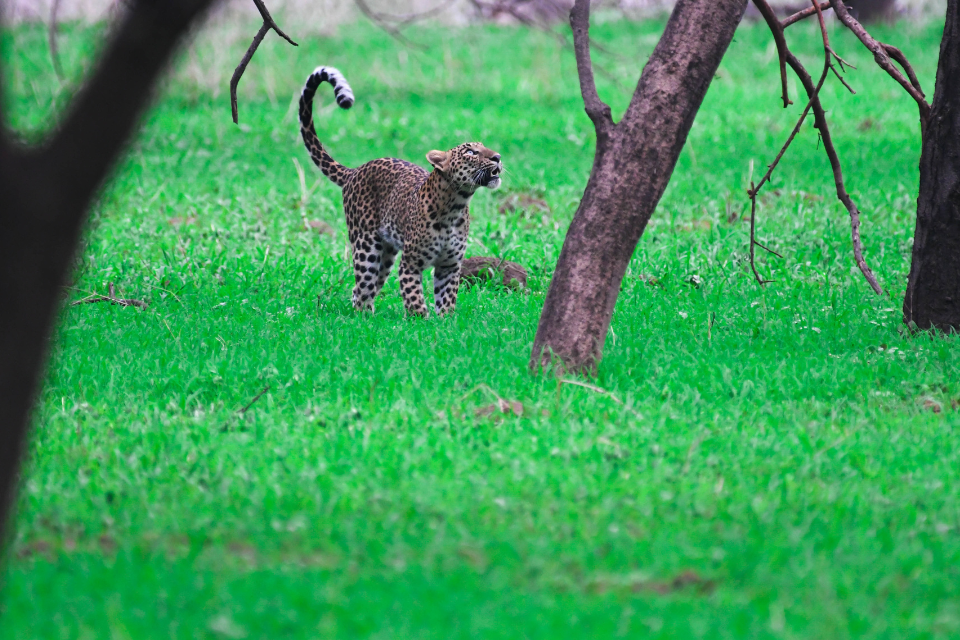- August 13, 2025
Beed Papad Waterholes: What to Look For (A Practical, First-Timer’s Guide)
Why waterholes matter at Beed Papad
Beed Papad is Jaipur’s newest leopard safari zone—launched on June 5, 2025 (World Environment Day)—and waterholes are the heartbeat of this dry, scrubby Aravalli landscape. The forest department opened two tourist routes here and developed ~19 km of tracks with around 12 waterholes to concentrate viewing and relieve pressure on Jhalana and Amagarh. If you learn to “read” a waterhole—light, wind, tracks, calls—you’ll see far more than chance allows.
Fast context: Beed Papad sits within the Maila Bagh–Beed Papad forest block of the Nahargarh Sanctuary, accessed from the Vidyadhar Nagar side. Jaipur is now (proudly) the first city with three dedicated leopard safaris: Jhalana (2017), Amagarh (opened to visitors in 2022), and Beed Papad (2025).
Quick facts for planners
- Where: Maila Bagh–Beed Papad, part of Nahargarh Sanctuary, Jaipur; approach via Vidyadhar Nagar side.
- Routes: Two core safari routes; guided gypsy safaris only.
- Infrastructure: ~19 km of tracks and ~12 waterholes prepared/restored.
- Capacity: About 10 registered vehicles at launch; timed slots.
What’s special: Compact, photo-friendly valleys, fresh waterworks, and leopard habitat linked to Jaipur’s wider Aravalli belt.
The anatomy of a “good” waterhole sighting
1) Light and shade
In scrub forests, contrast is your friend. On summer mornings, east-facing waterholes light up the scene while the far bank stays shaded—perfect for silhouettes of peacocks, jackals, monitor lizards, and sometimes a leopard stepping out. In winter, cooler air keeps cats on sunny rocks a little longer; check sunlit edges rather than the center.
2) Wind and scent
If wind is in your face, you’re less likely to be smelled before you hear/see movement. Ask your driver to park with wind blowing toward you, not toward the approach trail. A gusty crosswind at dusk often triggers spotted deer (chital) and nilgai to re-check water—stay 10 more minutes before moving on.
3) Fresh sign
- Pugmarks: Crisp edges = recent. Deep + rounded = older or on soft mud.
- Spray posts: Low shrubs/rocks can smell “catty”; guides spot these quickly.
- Scat: Large, segmented, hair/hoof shards = big carnivore; pellets are herbivores.
- Drag marks: Parallel furrows with disturbed leaf litter—often post-kill moves.
4) Alarm calls (your natural radar)
- Langur “khok” calls = predator seen on ground.
- Chital staccato barks = high-alert; direction of heads tells you the vector.
- Peafowl cackling can be false alarms—but paired with langur calls, pay attention.
5) Patience (the real “hack”)
High-quality sightings in compact forests come to those who wait smart. Rotate between 2–3 waterholes per drive instead of chasing radio chatter, and give each stop 10–15 quiet minutes—phones down, engine off, whisper-only zone.

When waterholes “switch on”
- Summer (Apr–June): Peak action. Expect short, decisive visits—predators and prey minimize exposure in harsh light. Leopards may drink and melt back into scrub in under two minutes; be ready.
- Monsoon (Jul–Sept): Everything’s green and gorgeous; ephemeral puddles reduce dependence on main waterholes. Sightings shift to trails and rocky ledges around the valley, with waterholes still active at dusk.
- Winter (Oct–Feb): Long, mellow light. Herbivores linger, birds crowd the edges, and predators use sunny approach slopes; cats may drink later in the morning when it warms slightly.
- Shoulder months (Mar & Oct): Unpredictable swings—good to double down on dawn/dusk strategy.
A simple plan for your first Beed Papad safari
Dawn route (example):
- Start with a valley-bottom waterhole—best trackability (fresh pugmarks on moist soil).
- Roll to a saddle waterhole (low point between two ridges). Listen for langurs on ridge trees.
- End at a shaded edge waterhole—good for last light silhouettes and bird action.
Dusk route (example):
- Begin with an open-cup waterhole (small, exposed) to scan quickly.
- Spend the middle 20–30 minutes at a screened waterhole (reed or shrub margins) with good wind.
- Close the drive on a broad basin waterhole with clear egress trails—cats often exit along those.
Tip: Don’t hop waterholes every five minutes. 10–15 minutes of silence at each usually beats FOMO-chasing a rumor across the park.
Reading the scene: “If this, then that”
- If peafowl explode upward and chital freeze, scan the opposite bank—stealth approach is likely.
- If langurs call high and keep moving, look for a ridge-top scan rather than a waterhole drink.
- If a jackal trots in and waits, a predator may be nearby; jackals often shadow leopards for scraps.
- If you see fresh pugmarks that stop, pivot to the nearest shade clump or rocky ledge—the cat is likely bedding or watching.
Ethics at waterholes (non-negotiable)
- Stay back. Don’t push the vehicle closer for “one more foot.” You’ll blow the moment for everyone—and the animal.
- Engine off. Idle noise masks alarm calls and footfalls.
- No flash, no playback, no bait—ever.
- Let animals drink. If an herbivore is nervy, keep silent and still so it can complete its drink and back out safely.
- Delay geotags. Don’t broadcast precise waterhole locations in real time.
Photography tips (built for Beed Papad light)
- Shutter first. For walking cats, start around 1/1000s, raise ISO as needed; aperture f/4–f/5.6 for subject/background separation in scrub.
- Expose for highlights. Cats in sun beside dark water = blown rosettes if you meter for shade.
- Eyes at the edge. Pre-focus on entry points (game trails), not the middle of the water.
- Sit down. You’ll be steadier and lower—eye-level transforms even common frames.
- Carry a lightweight bean bag; gimbal heads are great but bumpier on quick waterhole pivots.
What you might see (beyond the big cat)
- Striped hyena: Often post-sunset near carrion; shy, silent, spectral.
- Golden jackal: The opportunist; watch for pair patrols along the water edge.
- Jungle cat: Quick twilight darts; tiny ripples on flat water can betray a crossing.
- Monitor lizard & snakes: Heat-lovers; check sun patches on embankments.
- Birdlife: Kingfishers, bee-eaters, lapwings, drongos, peafowl, and raptors working the thermals above the valley.
Safety and timing essentials
- Stick to official gypsies and routes. It protects you and the wildlife—and your fees fund waterhole upkeep and patrols. Use Rajasthan OBMS for genuine bookings.
- Hydrate & cover up. It’s dusty, bright, and dry—carry water, scarf, hat, and eye protection.
- Listen to your guide. They know which waterholes have fresh sign this week.
- Evenings = slow exits. Animals move at dusk; respect speed limits on the way out.
How Beed Papad fits into Jaipur’s leopard circuit
Beed Papad joins Jhalana and Amagarh to spread visitor load and keep the experience high-quality. Launch reports note 10 registered vehicles, two routes, and a focus on restored grasslands/waterholes—all signs the zone was designed around ethical, water-led viewing. The Vidyadhar Nagar entry also opens up access from north/central Jaipur, meaning more local families can try a half-day wild escape.
Disclaimer (short, in-article)
This field guide is for informational purposes only. Wildlife is unpredictable and park regulations change without notice. Always follow your guide and the Rajasthan Forest Department’s rules; safaris here are on registered gypsies/routes only via Rajasthan OBMS. Keep distance, engines off at sightings, and avoid flash/playback/bait. Do not post live geotags. The author is not affiliated with the Forest Department; you assume all risks associated with your visit. Details (routes, waterholes, vehicle caps) reflect launch communications and may change—confirm at booking time.
FAQs
1) When did Beed Papad open to the public?
On June 5, 2025 (World Environment Day), with Jaipur becoming the first city to host three leopard safaris.
2) How many waterholes and how long are the tracks?
Launch communications and local briefings describe ~12 waterholes and ~19 km of tracks across two routes. Numbers may evolve as management adds work; check local updates at booking time.
3) What’s the best time to visit waterholes?
Summer for concentrated activity (early/late), winter for long, gentle light; monsoon shifts movement into greener cover—still productive at dusk.
4) Can I self-drive to waterholes?
No—registered gypsies only, on fixed routes and timings via Rajasthan OBMS.
5) How do I reach the entry gate?
Approach from Vidyadhar Nagar side of Jaipur; confirm your reporting point with your operator a day prior. News and local guidance reference Vidyadhar Nagar access for Maila Bagh–Beed Papad.
6) How many vehicles are allowed?
Launch coverage mentions about 10 registered vehicles; caps may change with management decisions.
Disclaimer All images used in this blog are either sourced from public domain or credited to their respective owners. If you are the copyright holder of any image and wish to request its removal or proper attribution, please contact us at [email protected]
